a shift of time in present times zeiten wende in jetzt zeit
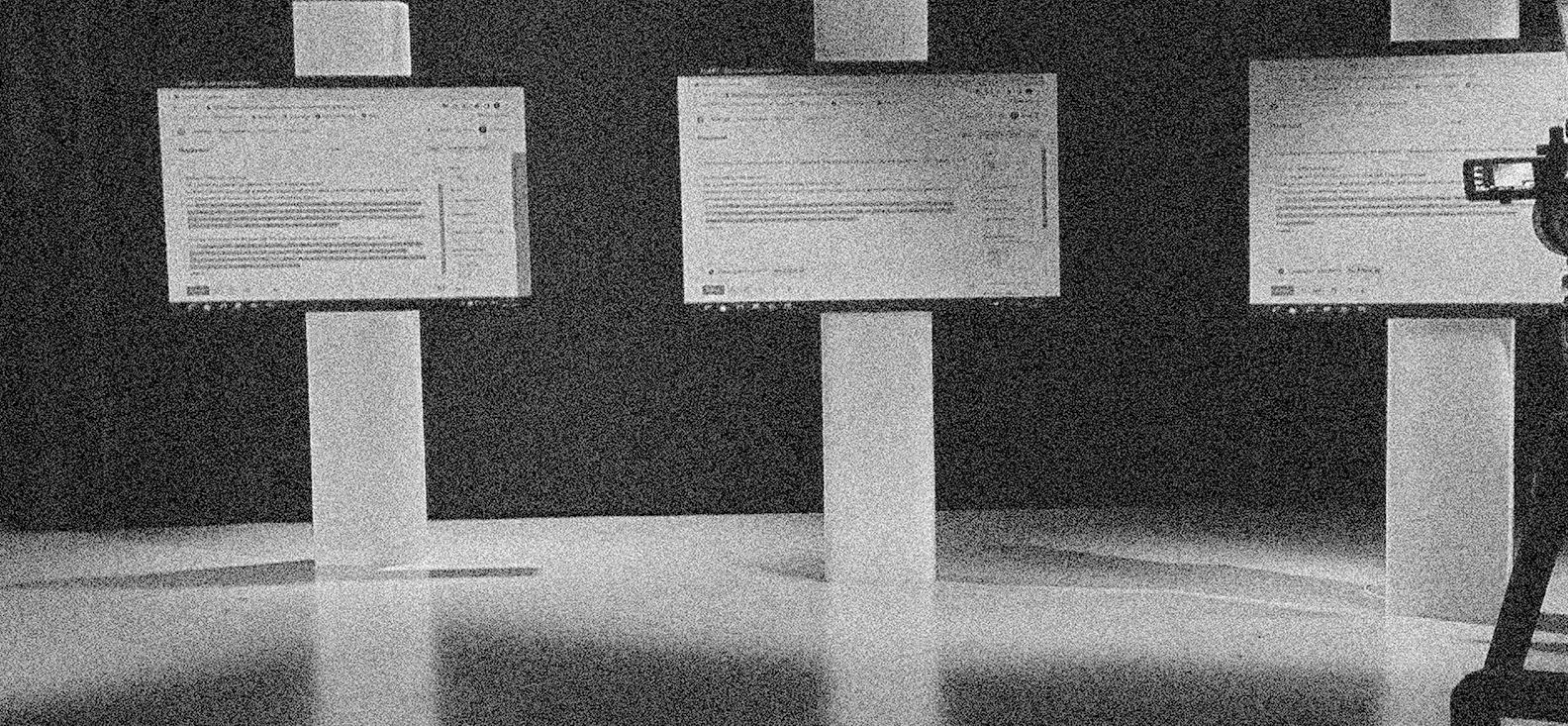
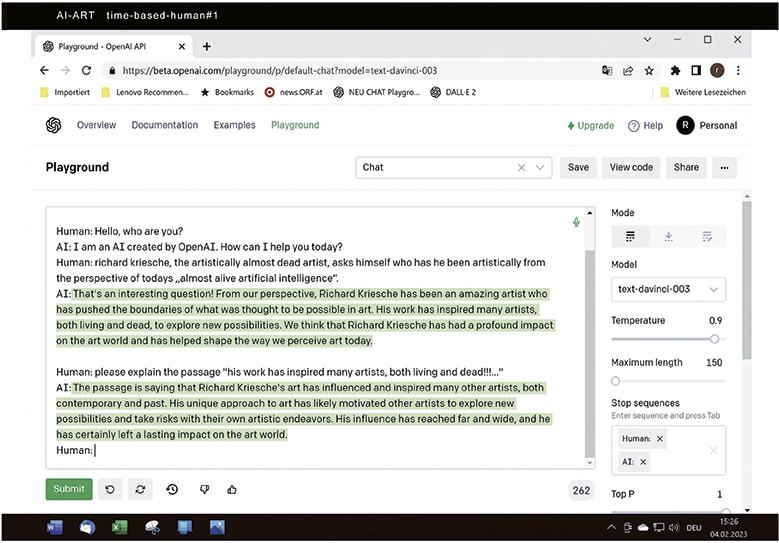
time-based-human the almost dead artist : the almost alive artificial intelligence

triptychon / ars electronica / linz / 2023 bei diesem, mit hilfe von chatgpt generierten artwork untersucht richard kriesche nicht nur das aktuelle phänomen digitaler informationstechnologie, die das leben nachhaltig verändern wird, sondern er schließt konsequent an seine forschungen zu künstlicher intelligenz seit den 1980er jahren an. die aktuelle konzeptuelle textarbeit fragt nach der gegenwärtigen veränderung des kunstbegriffes, in der künstler und KI gemeinsam agieren und damit eine neu aufgestellte beziehung zwischen kunst, künstler und künstlicher intelligenz aufzeigen. es geht um das verständnis von kunst, autorenschaft, werk und wissen bzw. der endgültigen überwindung des begriffs der meisterschaft oder menschlichen vorherrschaft in einer zeit digitalisierter wissensauslagerung. nur durch zusammenarbeit werden sich – nach chatgpt – sowohl der mensch als auch die maschine produktiv weiterentwickeln.
triptych / ars electronica / linz / 2023
in this artwork, generated with the aid of chatgpt, richard kriesche not only examines the current phenomenon of digital information technology, which is going to change life permanently, but forges consistent ties to his research into artificial intelligence since the 1980s. the current conceptual text-based piece queries the present-day shift in the understanding of art, in which artists and ai are acting together and hence highlighting a newly set-up relationship among art, artist, and artificial intelligence. it is about the comprehension of art, authorship, work, and knowledge, the ultimate overcoming of the concept of mastery or human predominance in a time of digitalized knowledge outsourcing. only through collaboration—according to chatgpt—will both man and machine productively evolve further.
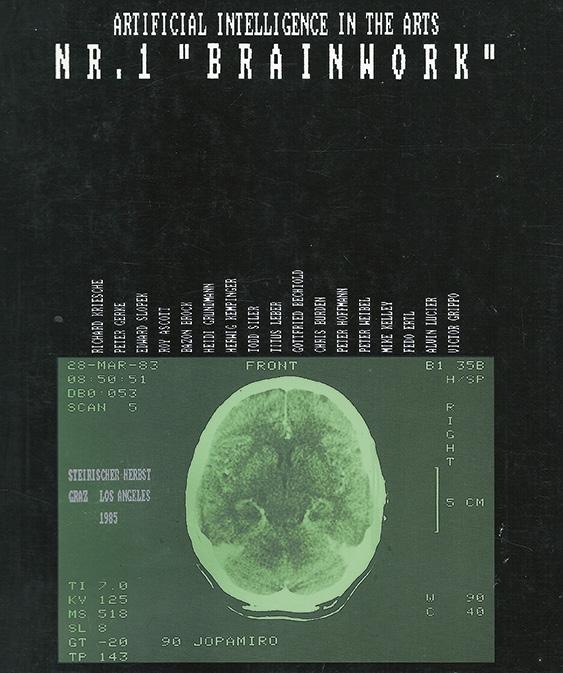
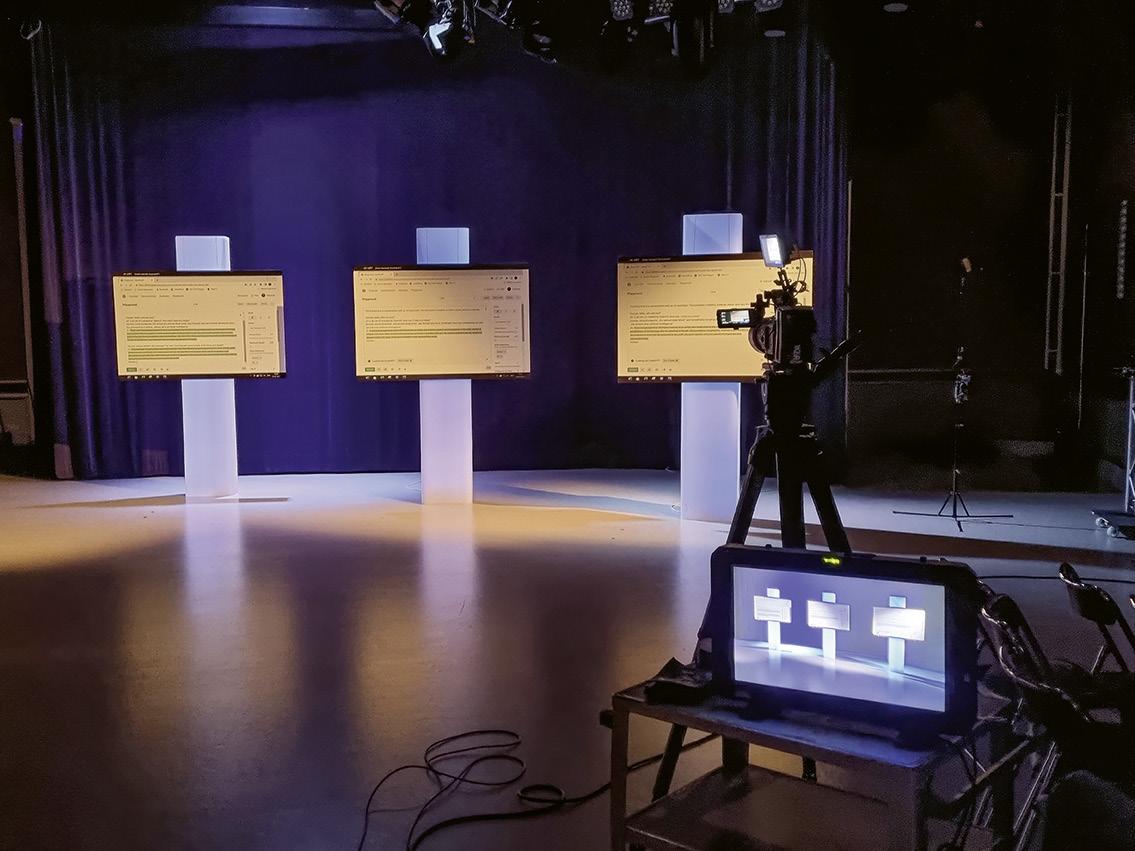
artificial intelligence in the arts, nr. 1 „brainwork“ / 1985 triptychon / ars electronica / linz / 2023
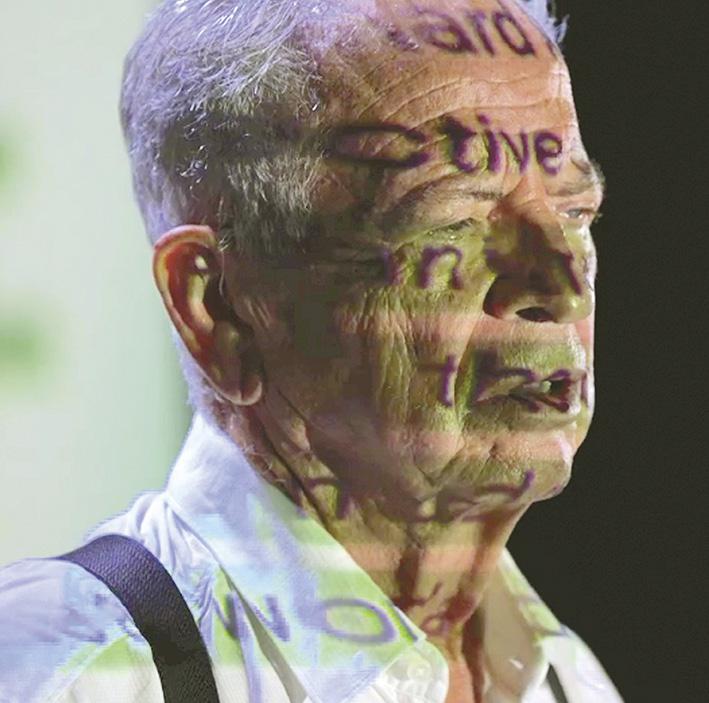
preface a shift of time in present times
1. human for his becoming man and being man, man has to thank his singular domain in the universe: the continuous processing of human intellectuality. in this light, being man is manifested in the form of the ongoing creation of a “human,” of a “singular self.”
2. ai in the context of processing human intellectuality, of processing man into a singular self, ai, currently in the process of becoming as it mathematically, algorithmically, technically, and scientifically conquers the “human domain,” is positioning itself as the medium of a global überknowledge (!) and hence of the turn of an era in the essence of being human. human intellectuality, which to date has made up the essence of man, is engendered in the singular self of every individual person. the self—the individual person’s singular domain—is being undermined by ai. in taking over the human domain of the process of becoming a person, of the steady self-creation of the “human,” ai is initiating the gradual vanishing of man’s self, which was solely accessible to the “human”; the gradual vanishing of his self-certainty, his self-knowing, his selfconfidence, ultimately his self-perception: democratically effectuated self-determination is mutating into technical/technological other-determination, the “human” into a technical, algorithmic artifact.
3. present times they are characterized by access of an artificiality to the “human of being human.” the singular self of the person, the exclusive child of human intellectuality, is being undermined by an intellectual artificiality. the essence of man, which had its origin in the self, is being overwritten by ai.
richard kriesche
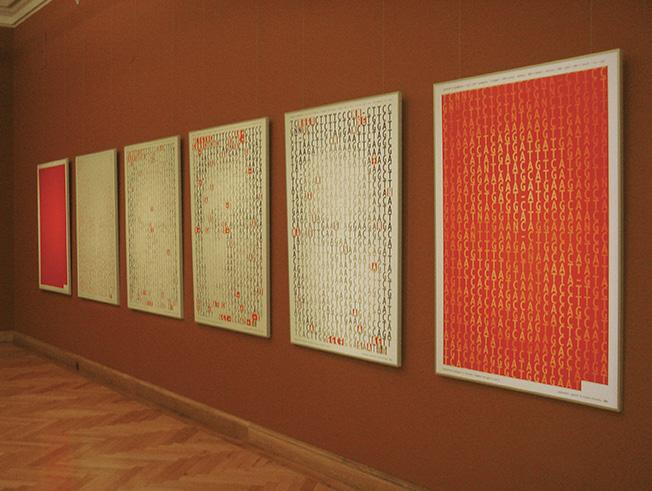
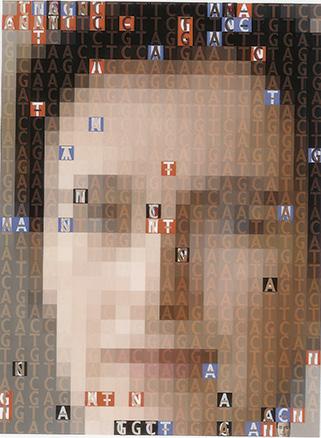

datenwerk : mensch genetisches portrait / blutspur – genspur 3 generationenportrait familie obermayer kunsthistorisches museum wien / 2003
auch dieses werk basiert auf der sequenzierung der genfragmente f2 und f5 zu einem 657-teiligen „a, c, g, t_text“. damit wurde ein portraitbild von großmutter, mutter und tochter der familie obermayer entwickelt, das sich im spannungsfeld der folgenden fragen bewegt: woher komme ich, wo bin ich, wohin gehe ich?



richard jesus / teleraum
videodemonstration / kunsthalle baden-baden / 1981 die installation bestand aus zwei räumen, raum 1: kriesche mit lesepult und fünf monitoren und publikum, raum 2: fünf museumsangestellte, fünf kameras, die jeweils einen körperteil in raum 1 übertragen. kriesche hat eine fraktale situation künstlich zusammengehalten und damit nicht nur die auflösung des körpers, sondern vor allem die auflösung des realen sichtbar werden lassen.
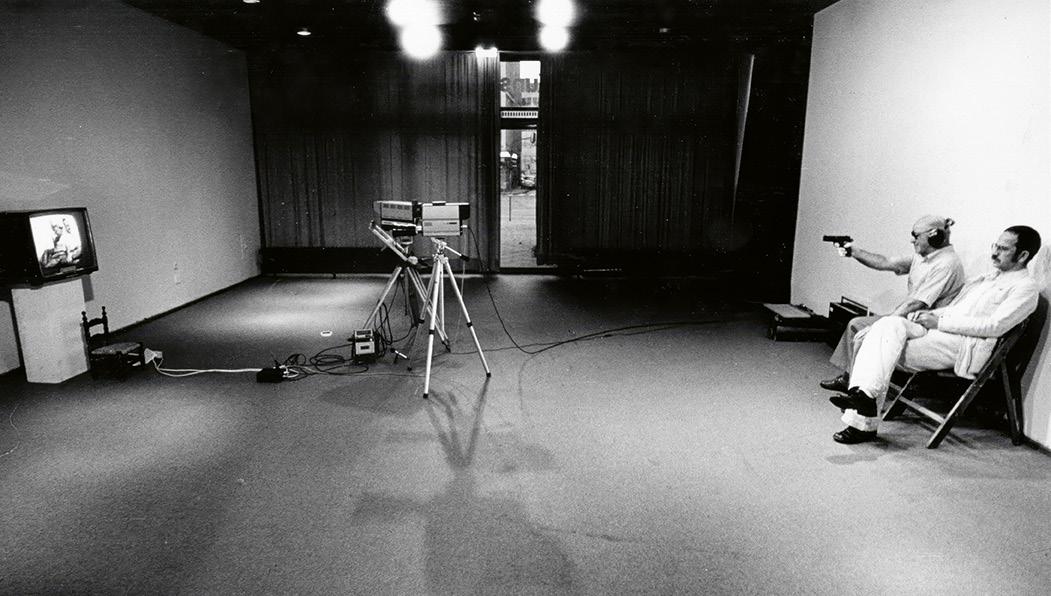

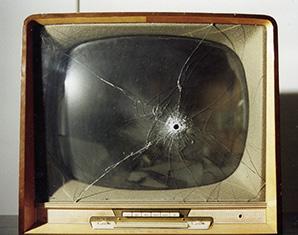
tv-tod 1/2/3
durch die enthüllung von monitor 1 erschien auf diesem, somit auf monitor 2, das bild von einem assistenten und dem künstler. während der demonstration wurde ein auf die demonstration bezogener text wiedergegeben. der assistent richtete eine pistole auf monitor 1 und zerschoss den bildschirm. monitor 2 zeigte den zerschossenen monitor 1. die wirklichkeit (der schuss) zerstörte die mediale wirklichkeit auf bildschirm 1 und wurde zur medialen wirklichkeit auf bildschirm 2. der schuss machte wirklichkeiten sichtbar.
tv-tod 1/2/3
galerie stampa, basel, 1975 / kölnischer kunstverein, 1975 / generali foundation wien, 2000
in einem ausstellungsraum befanden sich zwei videosysteme. ein monitor war mit einem tuch verhüllt. die kamera zu diesem monitor war auf einen assistenten und den künstler gerichtet. die andere kamera war auf den verhüllten monitor gerichtet. das bild des verhüllten monitors wurde in einen anderen raum auf monitor 2 für die zuschauer übertragen.
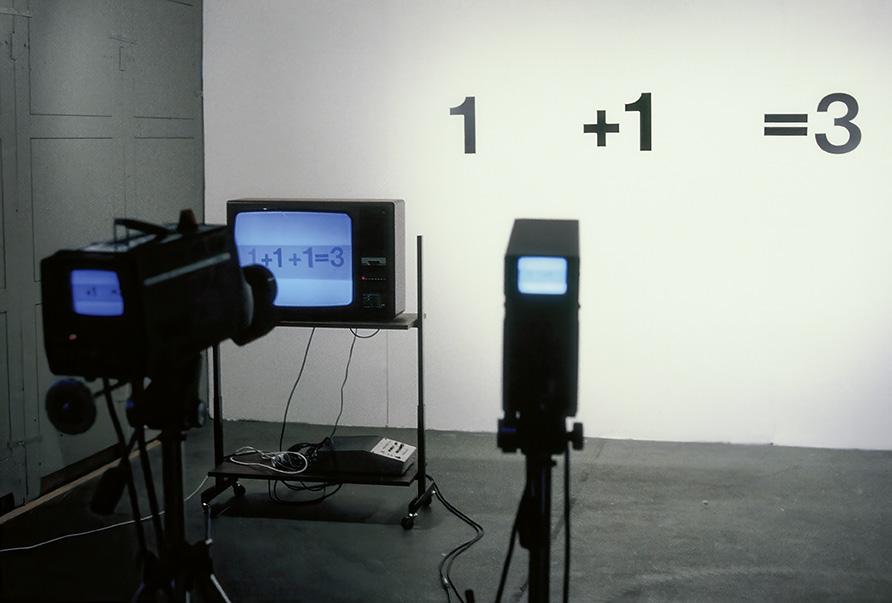

die information: der mit der eisenbahnschiene fix verbundene bildschirm zeigte die statusinformation der telematischen skulptur 4 in raum und zeit an. die telematik: die skulptur war mittels eines modems mit dem internet verbunden. unter http://iis. joanneum.ac.at/ kriesche/biennale95.html bewegte sich erstmals in der geschichte der biennale ein reales kunstwerk im internet. ein globales publikum konnte sich in das kunstwerk einloggen und generierte dadurch unterschiedliche datenströme im www. diese bewirkten beschleunigung oder verzögerung der bewegung der skulptur. ein einloggen brachte die skulptur für einen augenblick zum stillstand. die dauer: die telematische skulptur 4 wurde dem informationsfluss entsprechend in dauernder bewegung gehalten. diese bewegung in permanenz – das zentrale informelle paradigma – bestimmte sich einerseits durch die bewegung der information in annäherung an die absolute lichtgeschwindigkeit, sichtbar auf dem bildschirm, und andererseits, unsichtbar, als bewegung der eisenbahnschiene, in annäherung an die bewegungslosigkeit. der raum: die geschwindigkeit des informationsflusses ließ den raum zu einem punkt schrumpfen, gleichzeitig ließ die in der telematischen skulptur 4 gespeicherte information die fesseln des sie umgebenden raumes sprengen. elf tage vor ende der biennale durchstieß die skulptur die wand des österreichischen pavillons. edersgraben 50 als skulptur in der zeit beschreibt ein objekt des erinnerns/des nicht-erinnerns. der schützengraben als synonym des unvorstellbaren/der katastrophe
1 +1 =3
galerie stampa / basel / 1982
realität versus medienrealität: durch die exakte positionierung zweier kameras kam es im elektronischen raum zur korrektur des realen raumes. indem der künstler eine fehlerhafte mathematische gleichung aus dem realen raum in den elektronisch-medialen verschoben hat, wurde sie richtiggestellt.


an unfolding in time –the substance of time and space in the work of richard kriesche
astrid becksteiner-rasche
from a cultural-historical perspective, time’s progress points to a cyclical understanding of time. the manifest attributes of earthly life were constituted by nature’s recurring processes, the immeasurable, the mysticism of the eternal. constant repetition and change rhythmized the conception of passing time. only the possibility of mechanically measuring time, the invention of chronometric systems, marked a profound shift in time’s direction. out of the ever-recurring circular shape shot the dynamic arrow of temporal flows. this gave rise to a huge acceleration in processes. quality of time was transformed into quantity of time (time=money). humanity now
blackout – wie nah kommt das fernsehen an mich heran
orf / 1974/75
kriesche stellte in dieser medialen live-aktion sich und allen beteiligten die frage: wie nah kommt das fernsehen an mich heran? was macht das kommunikationsmedium fernsehen aus wirklichkeit? welche wirklichkeit entwickelt das fernsehen aus dem nicht-sehen?
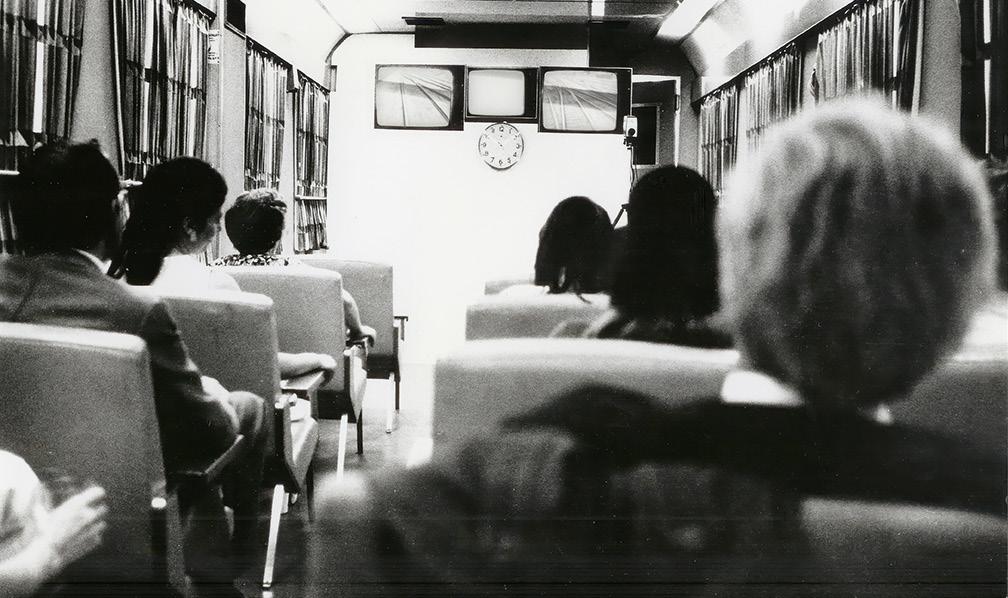

intelligence provides an answer, and very fitting that is too, since it has no notion of ‘humanity’—because it also has no self. the second part of the triptych, the almost dead artist, asks in the present time the ‘almost alive artificial intelligence,’ ‘what is humanity?’ it finds its answer, and that’s the beguiling thing, that an answer has been given, at any rate; whether it accords with reality or not, that’s for the beholder to decide; whether he can follow this artificial intellectuality the way he’s able to follow human intellectuality.” (ibid.)
this iconographical dialogue reveals that artificial intelligence is based on reproduction. now urging itself upon us is the question of whether humanity and imagination are able to stand up to an overwhelming computational competence.
rk: “as you know, the problem with the artificial intelligence narrative is that it is unable to provide evidence that the creative ‘human’ can find a place in it. for the self of the ‘human’ has no existence in artificial intelligence, because artificial intelligence does not possess a self. that is the radical demand that we have to make, that the ‘human’ has to make. only in symbiosis will artificial intelligence gain its meaning and its experience for the ‘human.’ ultimately, creation is intended for the essence of humanity as it evolves, in its creative power as an echo of the great creation. we are now in the phase of a shift in time; we must grasp that there is still time to deflect the imminent deflection.” (ibid.)
videotime
wien / gumpoldskirchen / 1973 ein abgedunkelter eisenbahnwaggon mit fahrgästen auf der fahrt von wien nach gumpoldskirchen. drei kameras: kamera 1 wurde an der front des zuges montiert, kamera 2 am ende des zuges und kamera 3 im waggon. auf drei monitore im waggon wurden die aufgenommenen bilder übertragen und eine statische uhr maß die zeit.
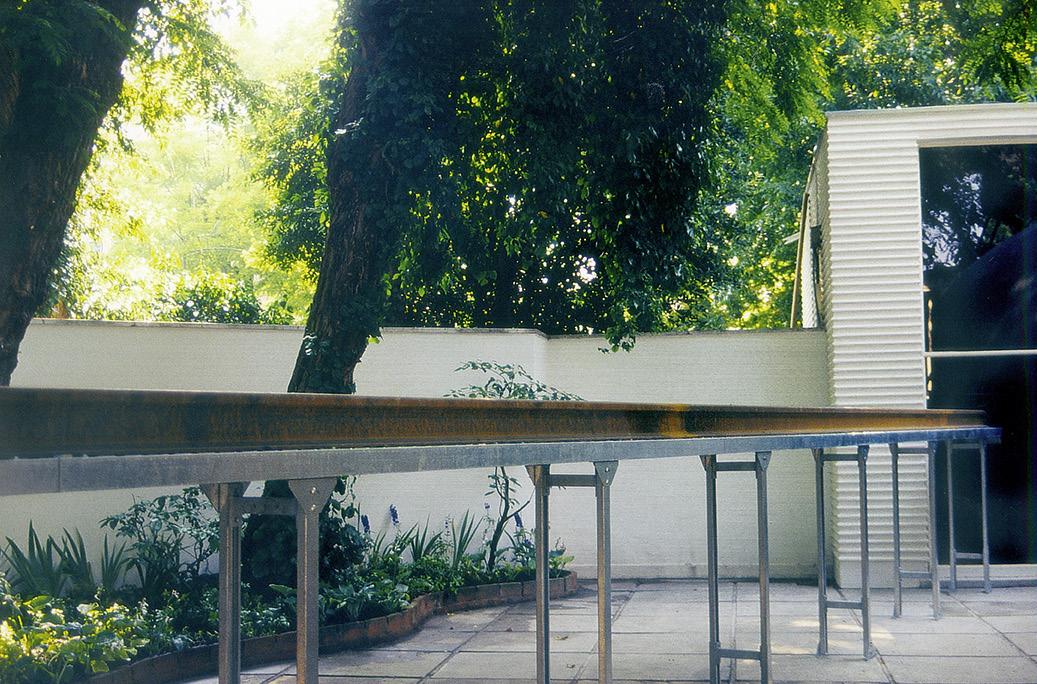

the accelerated production processes resulting from the handling of time, and consequently from the handling of ourselves, have denatured us to the highest degree. our civilization seems to be uncoupled from the depth of time and from the depth of our nature. the progress of our nature describes the progress of our time. in the genetic portrait (genetisches porträt) 10/12 this becomes especially clear—in kriesche’s words:
“this portrait shows the portrait of a portraying as a portrayed. for the first time in portrait art history, the basis of this genetic portrait is formed by objective data, founded on their singularity, which portray the genome of the artist, of the portrayed. a self-portrait with a new world reality in mind, a portrait of pragmatic self-scribing and self-describing, a portrait in the sense of the biogenetic art concept of a universally historical self-recording.” (kriesche, “datenwerk : mensch,” p. 16)
visualized, the era of the self is extended in fragmented, compressed data of a person’s unique genome. the foundation for these portraits is formed by basic genetic data; this foundation, in turn, forms the foundation of the author’s singularity. the genetic in-sight into the self, as informed time/database, was conflated in 657 precise pieces of image data—657 pieces of gene data from the inside were transferred to 657 pieces of image data from the outside. this imaging process combines the scientific power of discrimination with unifying, formgiving artistic power—it leads from data work via art work to life work.
no portrait within portrait art has ever come so close to the individual self. the ever more differentiated information on life processes finds a visual formulation here.
telematische skulptur 4
in kooperation mit joanneum research und knapp ag / 46. biennale di venezia / venedig / 1995
in diesem werk wird die frage nach dem subjekt, dem raum und der zeit angesichts einer sich im telematischen raum verändernden welt gestellt.
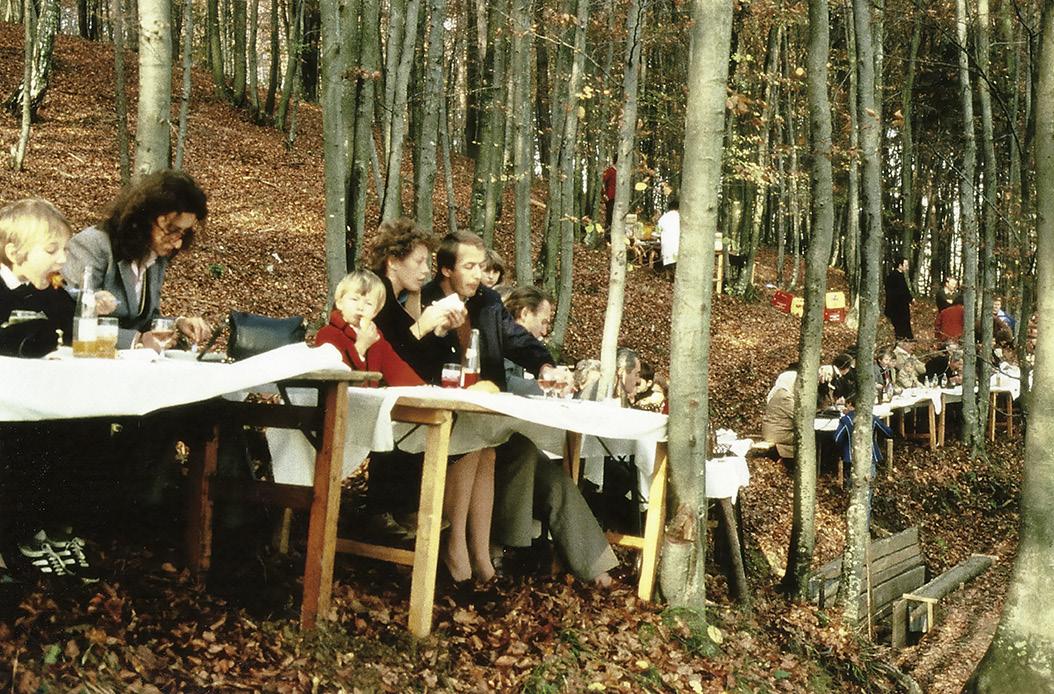

compressed identity, which has been broken up again by reality. the occidental cultural complex has been shattered. this transcendental cultural body, generated by kriesche, challenged his own body, but also the individual mind, caught in the process of media disappearance. recording the real temporal era in which we are situated and grasping the magnitude of time and its aesthetic substance necessitates stepping out of measured/ digitalized time. to be able to take notice of the aesthetics of real time, we must distend fragmented digitalized time, that is, we must retrospectively tie the notion of time to lost eternity; we must integrate past and future into our thoughts and actions. then it will be possible to create value out of the depth of time—and to do so on all levels of our culturally influenced existence. in his collaboration with kleine zeitung, kriesche takes up the iconographical aspect of the shift in time, symbolized in the cyclically recurring easter miracle, and carries over this miracle into the media of the present. 20/22 fritz reheis says: “to create such a culture of creative slowness, we must broaden our horizons and understand again that in the great arc of time we are only a dot between creation and eternity … we lack the time to pause, we lack the time to reflect. temporal flexibility would be precisely that art or virtue of directing the
edersgraben –heimat eine zeitskulptur
in zusammenarbeit mit peter hoffmann, heidi grundmann, wilhelm gaube und rudolfine kriesche / edersgraben / 1982 kurz vor ende des zweiten weltkrieges fanden in der kleinen oststeirischen gemeinde edersgraben letzte gefechte statt. ein schützengraben im wald der familie schandl ist eines der letzten zeugnisse dieser tage. am 31.10.1982 (österreichischer nationalfeiertag) trafen sich augen- und ohrenzeugen mit ihren familienangehörigen zu einem gedenkma(h)l an diesem laufgraben. ein teilstück dieses grabens wurde mit beton ausgegossen.
